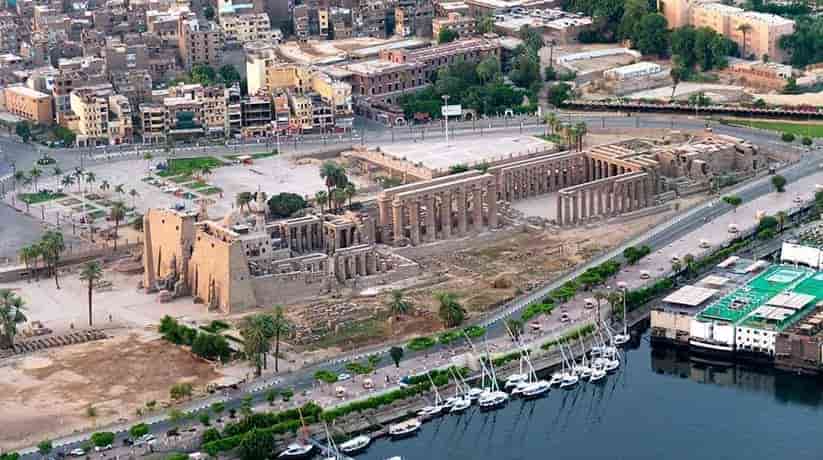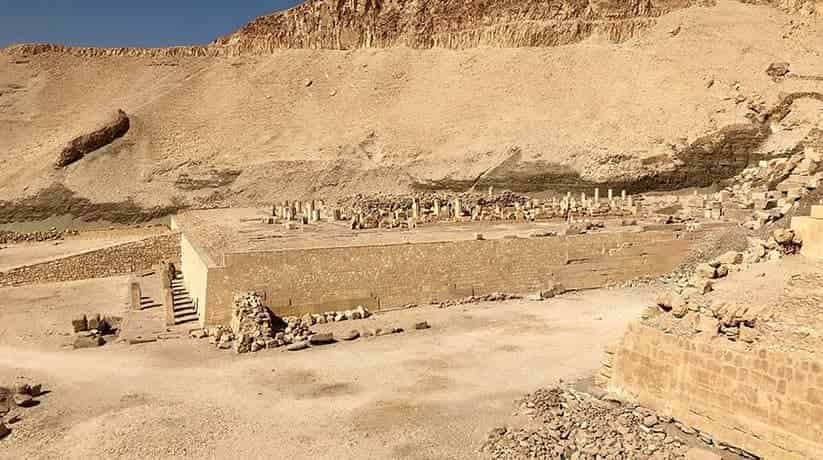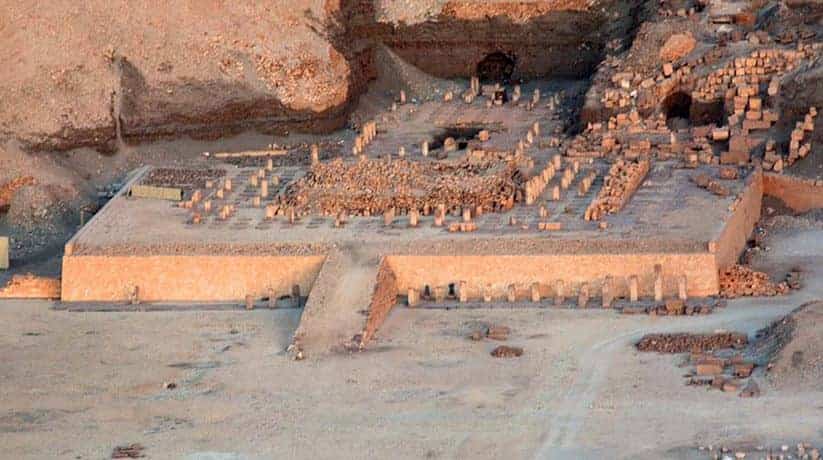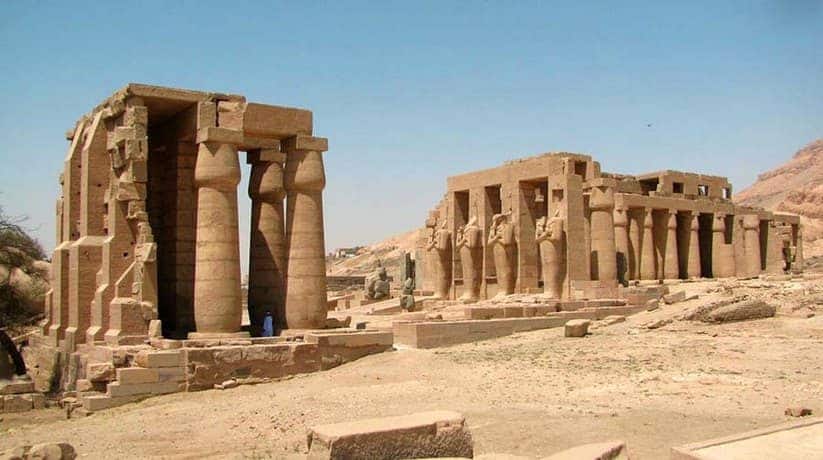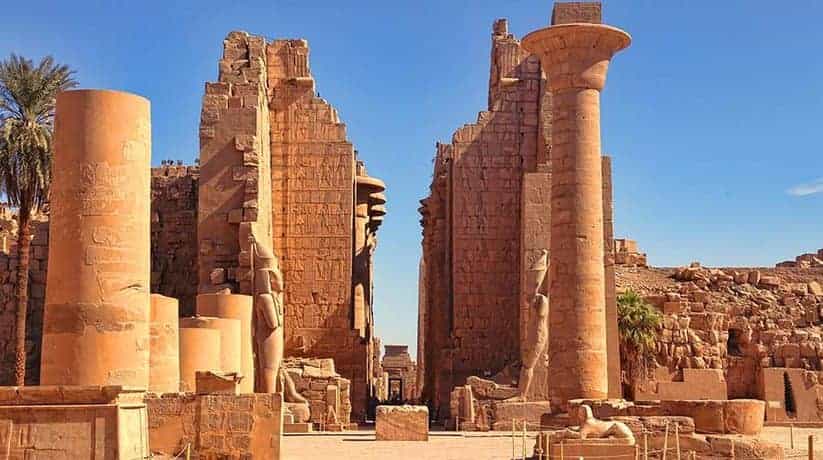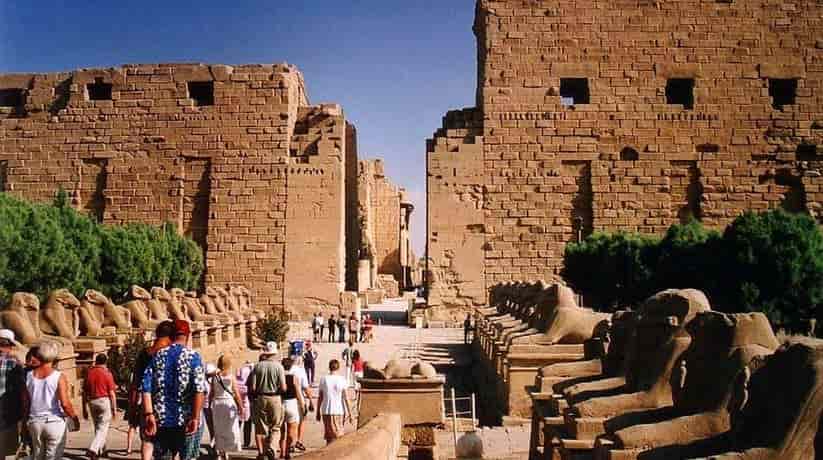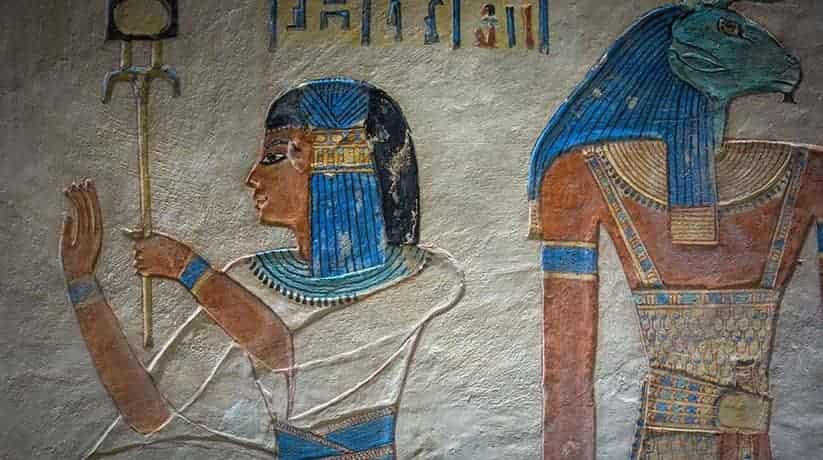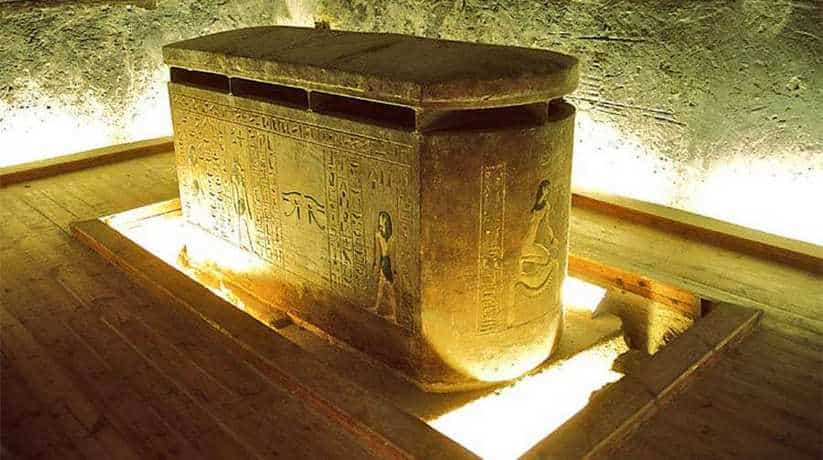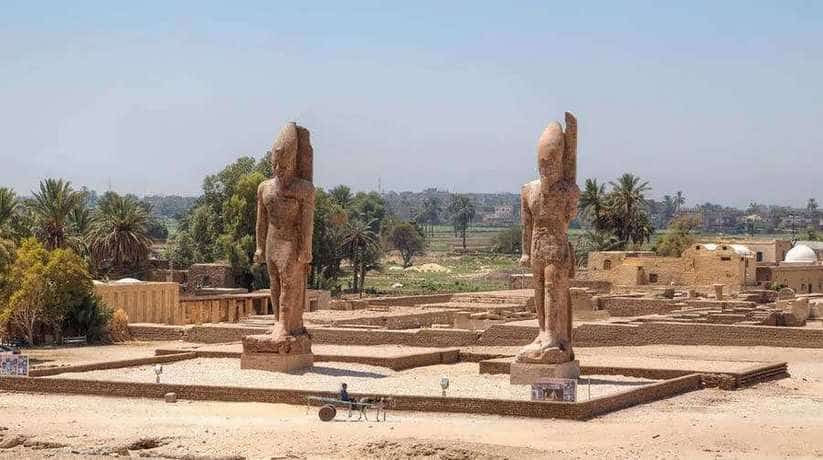Ancient Luxor Egypt sites, tours, booking, prices, reviews
Ancient Luxor include Amenhotep III temple. In fact, it was the largest temple which built on the West Bank. It covered an area of 35 hectares and one of the largest religious structures in Egypt. At the time of construction in Dynasty XVIII, it would have superseded the temple of Amun at Karnak in size. Kom El Hetan is the modern name for Amenhotep’s temple. It located about half a kilometer to the south east of Medinet Habu. In fact, it stretches from the Colossi of Memnon back to the bend by the Antiquities Inspectorate. The temple decayed rapidly. It is possibly due to the water content of the land it built on.
Ancient Luxor also include Dendera temple which located about 60 kilometers north of Luxor. It is on the west bank of the Nile River and opposite the provincial modern. Along with Dendera temple itself, there is also a necropolis. The necropolis includes tombs of the Early Dynastic Period. The most important phase that has identified was the end of the Old Kingdom. It is besides to the 1st Intermediate Period. In fact, the provinces were autonomous at that time and. Dendera was not a leading political force in Upper Egypt. Its notables built many Mastabas of some size. Though only one has any decoration apart from stelae and false doors. Moreover, on the west end of the temple site are brick which vaulted catacombs.
Further details about Luxor Egypt:
Ancient Luxor also include Edfu temple which dedicated to Horus, the falcon headed god. That is why it known as Horus temple. The temple located 60 kilometer north to Aswan in Egypt. Edfu was the 2nd Nome of Upper Egypt and also the center of the cult of a triad of Gods. It consisted of Horus of Behdet, Hathor, and their son, Hor-Sama-Tawy. In the old Greek documents Edfu known as “Apollopolis Magna”. In fact, it is because the Greeks identified Horus with their God Apollo. The temple built during the reigns of six Ptolemies. We have a great deal of information about its construction from reliefs on outer areas. In fact, the temple begun in 237 BC by Ptolemy III Euergetes I and finished in 57 BC.
Ancient Luxor also include Hatshepsut temple. The temple built just north of the Middle Kingdom temple of Mentuhotep. In fact, it is in the bay of cliffs which known as Deir El Bahri. In ancient times, the temple called Djeser-djeseru, meaning the “sacred of sacred”. It influenced by the style of the earlier temple at Deir El Bahri. Hatshepsut’s construction surpassed anything which built before. It is both in its architecture and its beautiful carved reliefs. Moreover, the female pharaoh chose to site her temple in a valley sacred to the Theban Goddess of the West. It was on a direct axis with Karnak temple of Amun on the east bank. On the other side of the mountain was the tomb which Hatshepsut constructed for herself. In fact, the tomb located in the Valley of the Kings (KV 20).
More details about Ancient Luxor Egypt:
Ancient Luxor also include Karnak temple in East bank of Luxor. The temple indeed is one of the greatest temples all over Egypt. Thebes was the capital of New Kingdom Egypt. In fact, the temple grown in importance throughout the Middle Kingdom, when it was a sanctuary of the god, Montu. Moreover, Karnak temple and Luxor temple together known as Waset. Thebes was the later Greek name for the town. The history of the temple and its gods told in three performances. They are in different languages each evening in a spectacular Sound and Light Show. In fact, the temple has the biggest temple complex in the world.
Ancient Luxor also include Khnum temple which located at Esna town, 55 kilometer south of Luxor. That is why it called Esna temple. Nile cruises often make this town their first port of call after leaving Luxor. It is to visit the remains of Ptolemaic temple in the center of the town. In fact, the ancient name for Esna was Iunyn or Ta-Senet, classical Latopolis. The temple dates back to the Ptolemaic and Roman Period and one of the last temples built in Egypt. Moreover, it stands today in its excavation pit, 9 m below the modern ground level. The temple Luxor dedicated to the god Khnum. It also dedicated to several other deities including Neith, Heka, Satet and Menheyet.
Further details about Luxor Egypt:
Ancient Luxor also include Luxor temple which located in the center of Luxor city. In fact, the temple known as “Ipet-resyt” or “the southern Opet”. Moreover, it served as a focal point for the Opet festival. Once a year the divine image of Amun with his consort Mut and their son Khonsu would journey. The journey was in their sacred barques from Karnak Temple to Luxor temple. It was to celebrate the festival which held during the inundation. Opet’s primary function was religious. But the festival was also significant in maintaining the king’s divine role. The earliest remains found at the temple date back to Dynasty XIII. It is possible that there was a shrine or temple on this site. It was during the Middle Kingdom, but it became more prominent in Dynasty XVIII.
Ancient Luxor also include Mentuhotep II temple which is a mortuary temple. It located in the West Bank of Luxor, just next to Hatshepsut temple at Deir El Bahari. The temple had important historical overtures. So it is not surprising that various teams have investigated the site. It was the first temple in Western Thebes to house a cult to the goddess Hathor. Moreover, it foreshadowed a new theological concept of the “Temples of Millions of Years”. It is which would gain popularity during the New Kingdom. Lord Dufferin is the one who discovered the temple. It was in the later half of the 19th century. Henri Edouard and Henry Hall are the first modern scholars to examine the site between 1903 and 1907. They supported by the Egypt Exploration Fund.
More details about Ancient Luxor Egypt:
Ancient Luxor also include the Ramesseum which is a funerary temple of Ramses II 1279–13 BC. It erected on the west bank of the Nile River at Thebes in Upper Egypt. In fact, The temple is famous for its 17 meter seated statue of Ramses II. Moreover, it dedicated to the god Amon and the deceased king. The walls of the temple, only about half preserved. Furthermore, they decorated with reliefs including scenes depicting Kadesh Battle and the Festival of Min. Kadesh is the Syrian wars. The temple identified with the “Tomb of Ozymandias”. The temple located in the Theban Necropolis. It is indeed a popular area for mortuary temples for Pharaohs in the New Kingdom. In fact, the Theban Necropolis located in Upper Egypt. Moreover, it stands across the Nile from the modern day city of Luxor.
Ancient Luxor also include Seti I temple which indeed is the most northerly of the Theban temples. It situated just past the road to the Valley of the Kings, towards the village of El Tarif. The present entrance of Satis temple is through a gate in the northern wall. In fact, the temple begun by Seti I who named it “Glorious Seti in the West of Thebes”. The temple dedicated it to Amun-Re and the cult of the deified Ramses I. After Seti’s death, the building and decoration completed by his son Ramses II. Same like many of the West Bank Temples, it saw a great deal of re-use after the New Kingdom. The first is during the Roman Period when it seems to have been an area. It is where artisans worked. Later during the Coptic era when parts of the temple converted to a church and dwellings.
More details about Luxor Egypt:
Luxor tombs include Amenherkhepshef tomb. It referred by QV 55, located in Valley of Queens in West bank of Luxor. Amenherkhepshef is the son of Ramses III and the Great royal wife Titi. In fact, Titi listed in the tomb (QV 52) as God’s Wife and God’s Mother. Moreover, her tomb lies nearby and includes some of the same titles on its walls. The tombs of the sons of Ramses III indeed are the finest monuments in the Valley of the Queens. In fact, Amenherkhepshef died in about the 30th year of Ramses III’s reign. It was when he was around 15 years old. Though some of his titles may show an older age. He was not one of the king’s elder sons. Though he did maintain many important positions within the court. He was the fan bearer to the right of the king.
Ancient Luxor also include Amenhotep II tomb KV 35 which discovered in 1898 by Victor Loret. It is similar in plan to that of his predecessor Thutmose III. In fact, it is one of the most beautiful tombs in the Valley. The discovery was rather spectacular. It is because the tomb contained the burial of the king and his son Webensenu. Amenhotep II tomb Luxor is a large tomb with complex architecture. It similar in many respects to the tomb of Thutmose III. Like other tombs in the valley, there are two sets of stairways. There are also two corridors before the ritual shaft.
Further details Ancient Luxor:
Ancient Luxor also include Ankh hor tomb which is one of a series of large tombs in the Asasif area. The area located in the West Bank of Luxor. In fact, the tomb built at the end of the Third Intermediate Period. It built for high officials in the estates of the Gods Wives of Amun. The great importance of the Gods Wives during this time reflected in the size of the tombs. Moreover, these tombs of their chief administrators, that of Ankh-hor being no exception.
Ancient Luxor also include Ay tomb WV 23 which belongs to King Ay, Tutankhamun’s successor. In fact, it found in the Western Valley. The Western Valley branches off at the entrance to the main Valley of the Kings. Moreover, only two completed king’s Tombs found here to date. The other being the tomb of Amenhotep III (WV 22). It recently undergoing re excavation and restoration. In fact, the burial place of Ay tomb Luxor discovered in 1816. It was by Belzoni at which time it appeared to plundered and mutilated in antiquity. In fact, the king’s mummy never found. Ay tomb Luxor is linear in plan. It shows more similarity to the Amarna Royal Tomb. Furthermore, it also does the later Theban Tombs than to previous Dynasty XVIII structures.
More details about Luxor:
Ancient Luxor also include Horemheb tomb which discovered by a young British Egyptology man named Edward Ayrton. It was in 1908. Horemheb was the successor of Ay, who in turn, had succeeded Tutankhamun as pharaoh of Egypt. He actually not related to the earlier kings of the 18th dynasty. Though he served in the courts of first Amenophis IV, and then Tutankhamun and finally Ay. Horemheb was a royal scribe and general of the armies at various times. He restored the old worship of Amun. Furthermore, he also reconstructed the provincial administration and military cadres. The tomb filled with rubble. Moreover, it washed in by the infrequent rain over the past thousands of years. Another two days required to clean the rubble from the tomb itself. It was after removing the debris from the entrance.
Ancient Luxor also include Inherkhau tomb TT 359. The tomb located in the necropolis of Deir el Medina on the West Bank at Luxor. In fact, the tomb indeed has rich and refined decorations. Moreover, the tomb represents some of the best artistic work of the 20th Dynasty. The tomb is the only tomb in this necropolis that we know which dates back to that dynasty. There are decorations in an upper chamber and the burial chamber. Furthermore, all painted on a yellow background. In fact, Inherkhau had the title “Foreman of the Lord of the Two Lands in the Place of Truth”. He lived and also worked during the time reigns of Ramses III and Ramses IV in the 20th Dynasty. He also had an important position in life, and so in death in his tomb.
Further details about Ancient Luxor:
Ancient Luxor also include Khaemhet tomb TT 57 which is a private tomb. In fact, it located on the West Bank at Luxor (ancient Thebes). Khaemhet (also known as Mahu) was the “Overseer of the Granaries of Upper and Lower Egypt”. Moreover, he also was a Royal Scribe. He married to his wife named Tiyi. Khaemhet tomb Luxor gives a lot of attention to another scribe by the name of Imhotep. We do not no much about the rest of his family. For example, children do not appear to pictured on the walls of Khaemhet tomb in Luxor. Moreover, it known since George Lloyd discovered it in 1842. George Lloyd is an amateur archaeologist, botanist and traveler. Khaemhet tomb in Luxor indeed is a beautiful tomb. Though somewhat these days due to the removal of most of its paint from the tomb’s decorations.
Ancient Luxor also include Khaemwaset tomb QV 44. The tomb located in the Valley of the Queens in the West Bank of Luxor. In fact, Khaemwaset is one of the sons of Ramses III. The tomb discovered in February 1903. It is with a many sarcophagi which pilled up in the entrance corridor. This was a clear sign that it used for common burial. In fact, Khaemwaset had among his most important roles, that of Priest of Ptah in Memphis. Moreover, his major titles included “Fan-bearer to the Right of the King” and “Sem-priest”. It indicated by reliefs in the temple of Medinet Habu.
More details about Luxor:
Ancient Luxor also include Kheruef tomb. It found in the area of Asasif, to the south of Deir el-Bahri in Luxor. Kheruef, also called Senaa, was Steward of the Great Royal Wife, Tiye. It was during the reign of Amenhotep III and Amenhotep IV. In fact, the tomb complex is large, as befits a man in his exalted position. Moreover, the tomb unfinished at the time of his death (he never buried in the tomb). Most of the inner rooms of the structure closed off. The tomb entered down a staircase and passage. The passage also leads to a large open court leading to several other later tombs. At the entrance to the passage of the tomb, there is a double-scene on the lintel. It depicts Amenhotep IV (later Akhenaten) with his mother Tiye offering to deities. Moreover, it includes offering texts with a cartouche of Tiye at the bottom.
Ancient Luxor also include Khonsu tomb TT 31 which located in the west bank of Luxor. The tomb of Khonsu in Luxor has many lovely paintings. They depict the cult of the god Montu and Thutmose III. In fact, Khonsu (also called To) was a priest of the cult of Thutmose III. His title was “First Prophet of Menkheperre”, during the reign of Ramses II. Two offering stelae set up against the wall at either side of the entrance to Khonsu tomb Luxor. Khonsu tomb Luxor consists of a wide transverse hall leading to a passage and niched shrine at the rear. In the entrance the deceased, with his Family, worship Re. There are also paintings of birds on the ceiling.

